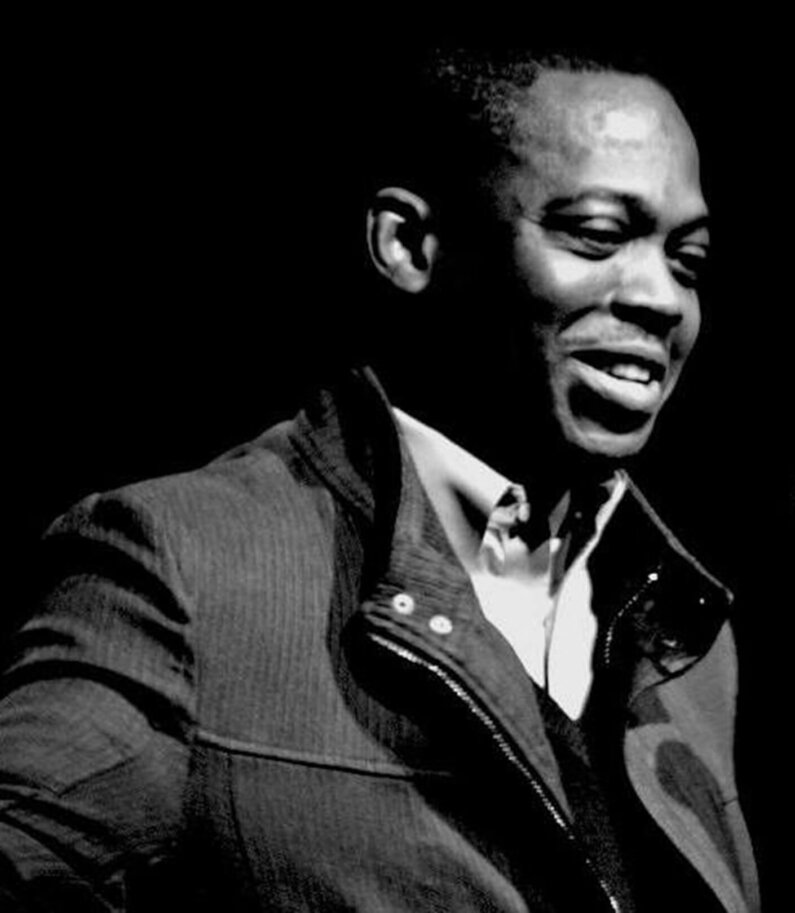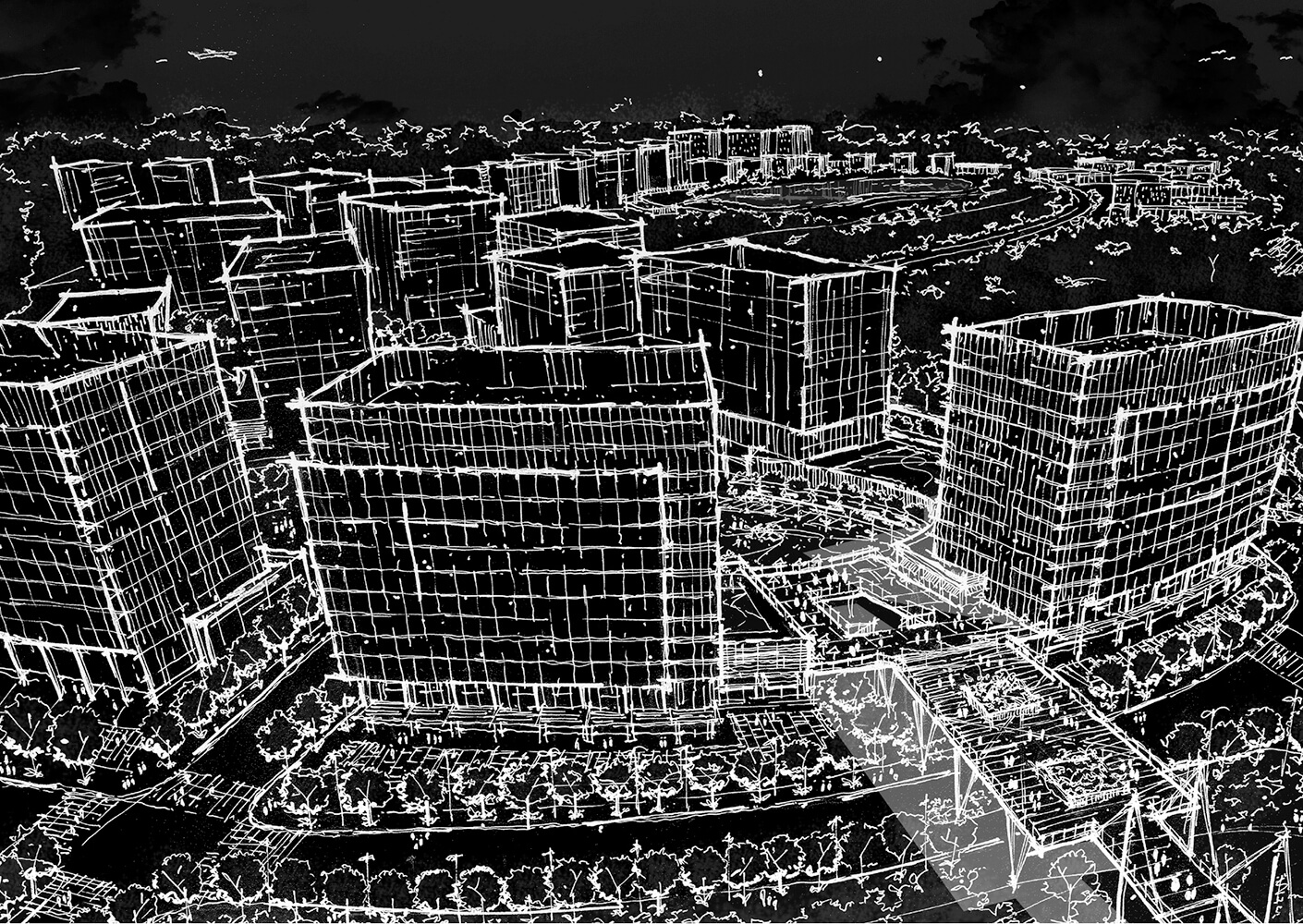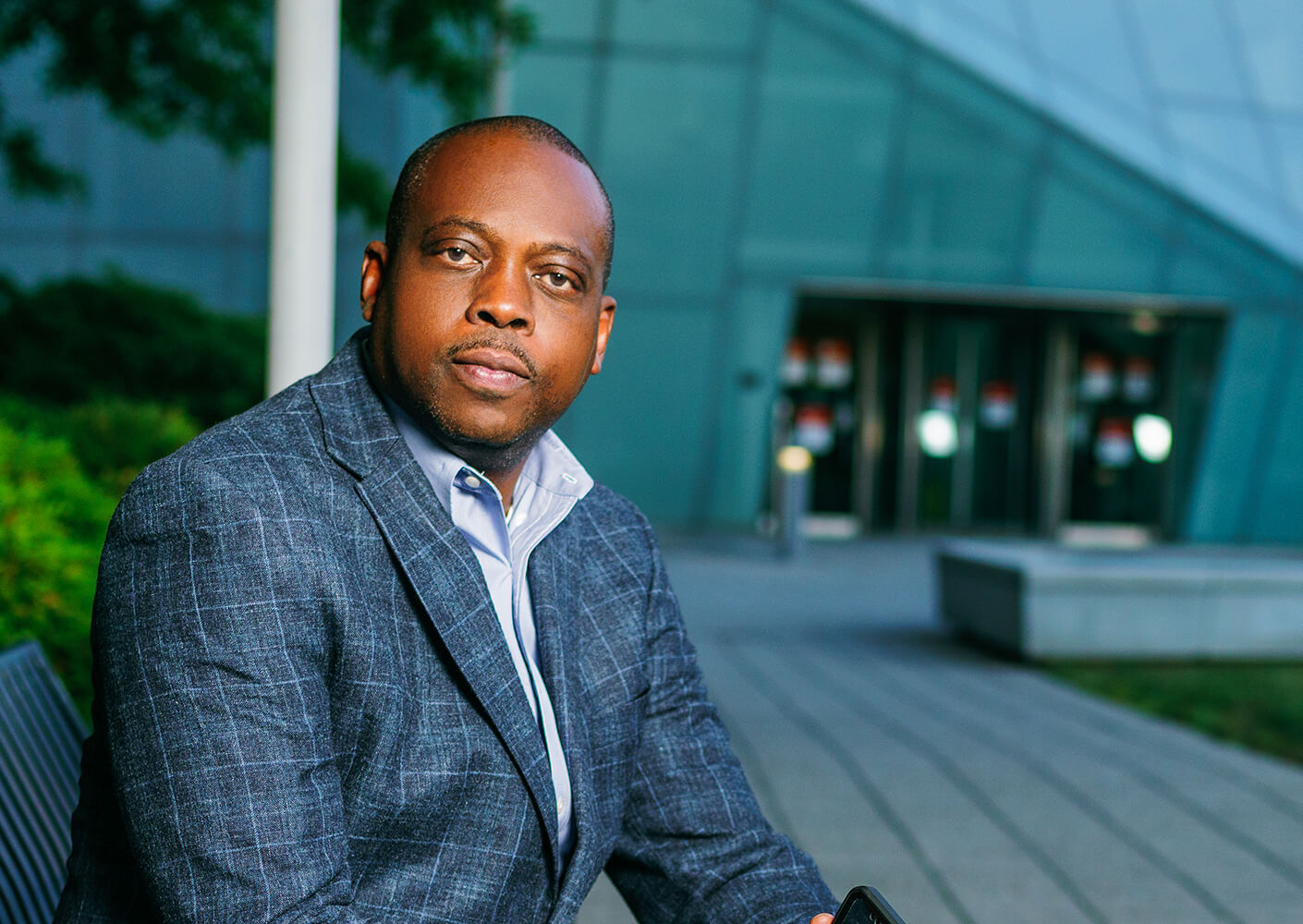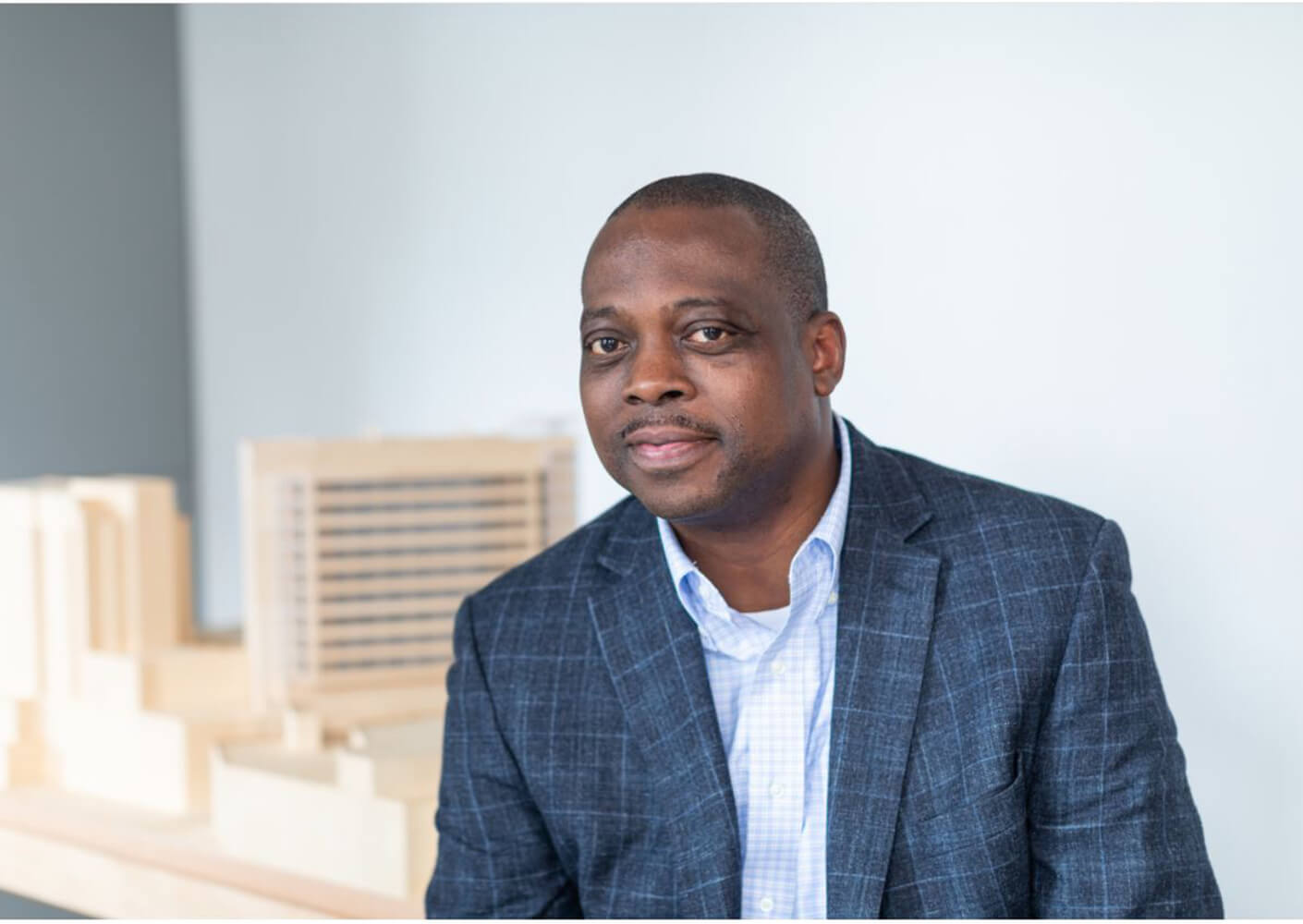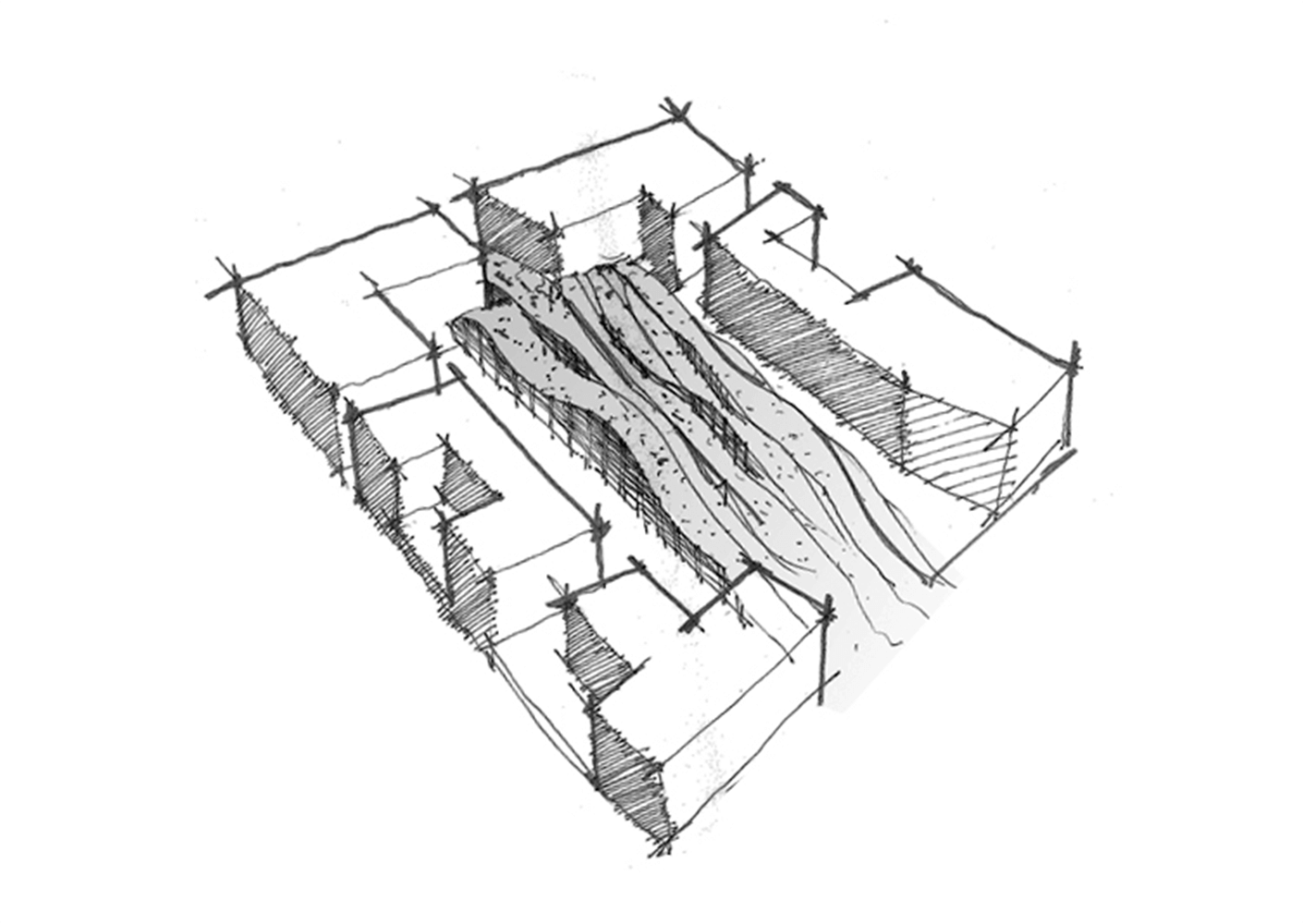In the summer of 2021, award-winning architect Mide Akinsade joined Perkins&Will as design director for the firm’s Houston studio. With over 20 years of base building, interior architecture, master planning, urban design, furniture design, and digital experience design, Akinsade brings an eclectic, collaborative approach to his work and leadership style. We spoke to him just as he was beginning his new role, delving into topics ranging from diversity and inclusion to research to client engagement.
Perkins&Will: What was it about Perkins&Will that appealed to you?
Mide Akinsade: I have long admired Perkins&Will as a firm that exemplifies design excellence. It’s apparent as much in the caliber of their work as it is in the character of its people. I knew joining the firm would ultimately feel synergistic, as we stand for the same values.
When I was an undergraduate student at the University of Maryland, I was doing research for a project—an educational building—and I’d gone to the library to look up precedents, notable projects to use as a guide. I came across a school designed by Perkins&Will back in the 1930/40s, and I remember being enamored by the rigor of the design, façade, and plan—by the way it fit into its context and represented the zeitgeist of the era in a bold unapologetic way. It was the Crow Island School in Winnetka, Illinois. Later, as a young working architect, I saw Perkins&Will’s “Selected and Current Works” on my then-boss’s desk, and he gifted it to me. It was serendipitous! I still have that book in my personal library, and it’s been a source of inspiration ever since.
PW: A lot of people who come to work for Perkins&Will do so because they share our core values—our “pillars of purpose”—and feel a synergy. Is that the case for you?
MA: Perkins&Will’s core values are in alignment with my personal design ethos. I’d say the values that resonate with me the most are research, design excellence, living design, J.E.D.I. (Justice, Equity, Engagement, Diversity, and Inclusion), and social purpose.
